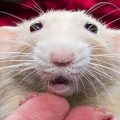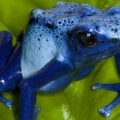随着PTE考生对PTE口语和PTE听力的重视,大家口语和听力的分数得到极大提高,但是PTE阅读渐渐成为考生们新的难题。
墨尔本悉尼文波PTE特别为PTE考生们挑选了适合练习PTE阅读的文章,主题,内容,长度都与PTE阅读题中的文章相似。激活学过的词汇,更新新的词汇,提高阅读速度,全面提升自己的阅读能力。
As a postdoc, plant biologist Christopher Topp was not satisfied with the usual way of studying root development: growing plants on agar dishes and placing them on flatbed scanners to measure root lengths and angles. Instead, he would periodically stuff his car with plants in pots dripping with water and drive more than 600 kilometres from North Carolina to Georgia to image his specimens in 3D, using an X-ray machine in a physics lab.
Five years later, the idea of using detailed imaging to study plant form and function has caught on. The use of drones and robots is also on the rise as researchers pursue the ‘quantified plant’—one in which each trait has been carefully and precisely measured from nearly every angle, from the length of its root hairs to the volatile chemicals it emits under duress. Such traits are known as an organism’s phenotype, and researchers are looking for faster and more comprehensive ways of characterizing it.
postdoc: adj. 〈口〉博士后的
agar: n. 琼脂(一种植物胶)
drones: n. [昆]雄蜂;(英)懒汉;遥控飞机
volatile: adj. 挥发性的;爆炸性的;不稳定的;
duress: n. 监禁;强迫
phenotype: n. 显型





